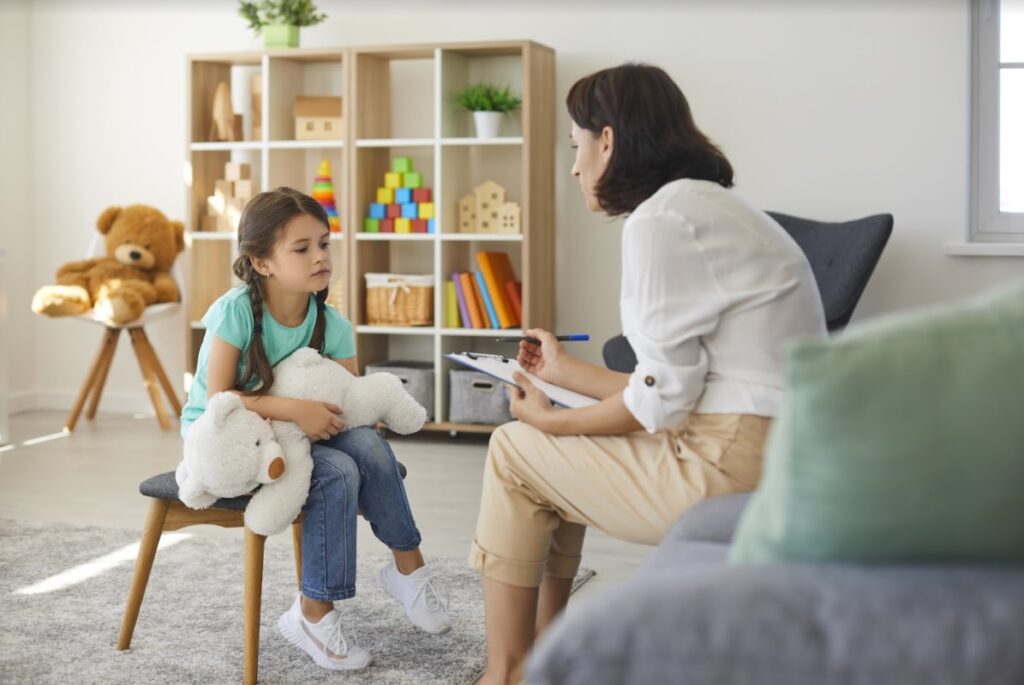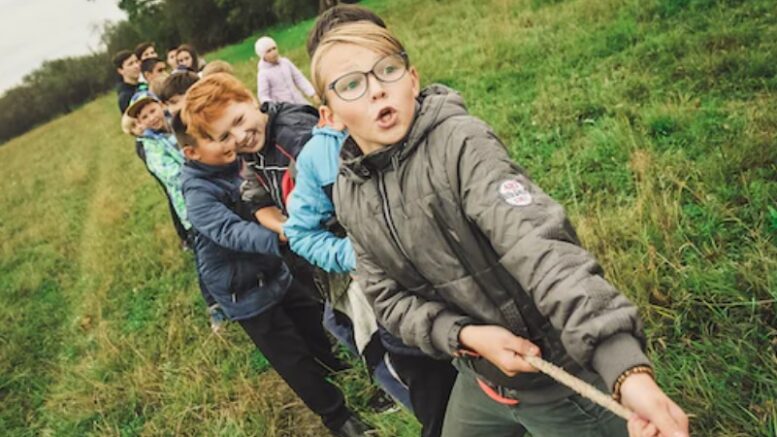If you have a child or adolescent who is struggling with mental health issues, a sudden life change, substance abuse, or emotional difficulties, there are various types of therapies that you can look into to find the right fit.
We will explore six great options for children and teens, including cognitive-behavioral therapy, wilderness therapy, art therapy, play therapy, family therapy, and interpersonal therapy. Each of these approaches boasts its own strengths, so look into each one and find the best fit for your situation.
1. Cognitive-Behavioral Therapy (CBT)
Cognitive-behavioral therapy (CBT) is a kind of psychotherapy in which individuals work with a mental health counselor to address inaccurate or negative thinking patterns.
Many adolescents will hold beliefs about themselves or the world around them that are negative or counterproductive. CBT aims to reshape these thoughts into more positive affirmations.
CBT helps teens gain clarity in challenging situations and develop more effective responses. It is good for managing mental health conditions such as depression, PTSD, and eating disorders. It’s also useful for teens without mental health issues, helping them to improve their stress management and coping skills in various life and school situations.
2. Wilderness Therapy
Wilderness therapy is a form of therapy that involves taking children and adolescents into natural outdoor settings. This therapeutic approach promotes outdoor activities, such as hiking and camping, which serve as metaphors to help young people address emotional and behavioral challenges.
The benefits of nature therapy include enhanced self-esteem, improved interpersonal skills, better coping mechanisms, and increased self-awareness. The Trails Carolina is one such wilderness therapy program for young people. This program fosters personal growth, self-reflection, and resilience, helping kids gain confidence and develop valuable life skills.
3. Art Therapy
Art therapy is a way for individuals to explore their emotions, develop self-awareness, and begin to process unresolved traumas. It is a popular type of therapy for kids and adolescents and involves a lot of creative freedom and free thinking.
There are various activities that you can conduct to explore art therapy with children. Young children can benefit from these activities as they develop social skills and increase self-confidence.
Teenagers will also benefit significantly from art therapy, as it provides a space for them to enjoy judgment-free and consequence-free self-expression. Adolescents can lay out their thoughts and feelings in art therapy without worrying about being chastised or chided.
4. Play Therapy
Play therapy benefits children, adolescents, and even some adults. This kind of therapy is primarily used on children, as they can have difficulties expressing their emotions to adults. A trained therapist can use play to gain insights into the thoughts and actions of the child.
Through play, therapists can guide children through the process of dealing with unresolved trauma, provide new coping mechanisms, and redirect inappropriate behaviors.

5. Family Therapy
Family therapy is a kind of talk therapy that focuses on improving the relationships of family members. In family therapy, children and adolescents can undergo therapy with other members of their immediate family to address communication breakdowns, or more specific mental or emotional issues, such as substance abuse.
Common issues that lead kids and adolescents to family therapy include sudden life changes like moving house, problems that arise from aging, death and grief, and inter-family relationship breakdowns.
6. Interpersonal Therapy (IPT)
Interpersonal therapy is a kind of therapy that works particularly well for adolescents dealing with depression. It focuses on improving interpersonal relationships and communication in order to alleviate the symptoms of depression and loneliness.
IPT explores how a teenager’s interactions with others could contribute to their emotional distress. Through structured sessions, adolescents learn effective communication, problem-solving, and emotion-regulation skills with their therapist.
IPT aims to enhance social functioning and rebuild relationships, thus alleviating depressive symptoms. This therapy was initially developed as a short-term intervention for depression, but IPT has also shown promise in dealing with anxiety, bipolar, BPD, dysthymia, eating disorders, perinatal and postpartum depression, PTSD, social anxiety, and substance and alcohol use disorders.
Conclusion
We have explored six common and popular therapy approaches for young people, all of which have their own benefits. CBT is great for adolescents who need to learn to retrain their thoughts away from the negative, while nature-based therapy can hugely benefit kids of all ages in gaining social skills and self-confidence. Art therapy allows kids and teens to explore their emotions in a safe and creative space, while play therapy helps small kids work through their traumas and emotions through self-expressive play. Family therapy benefits the entire family, while interpersonal therapy can benefit children and adolescents who need help making friends in school.
